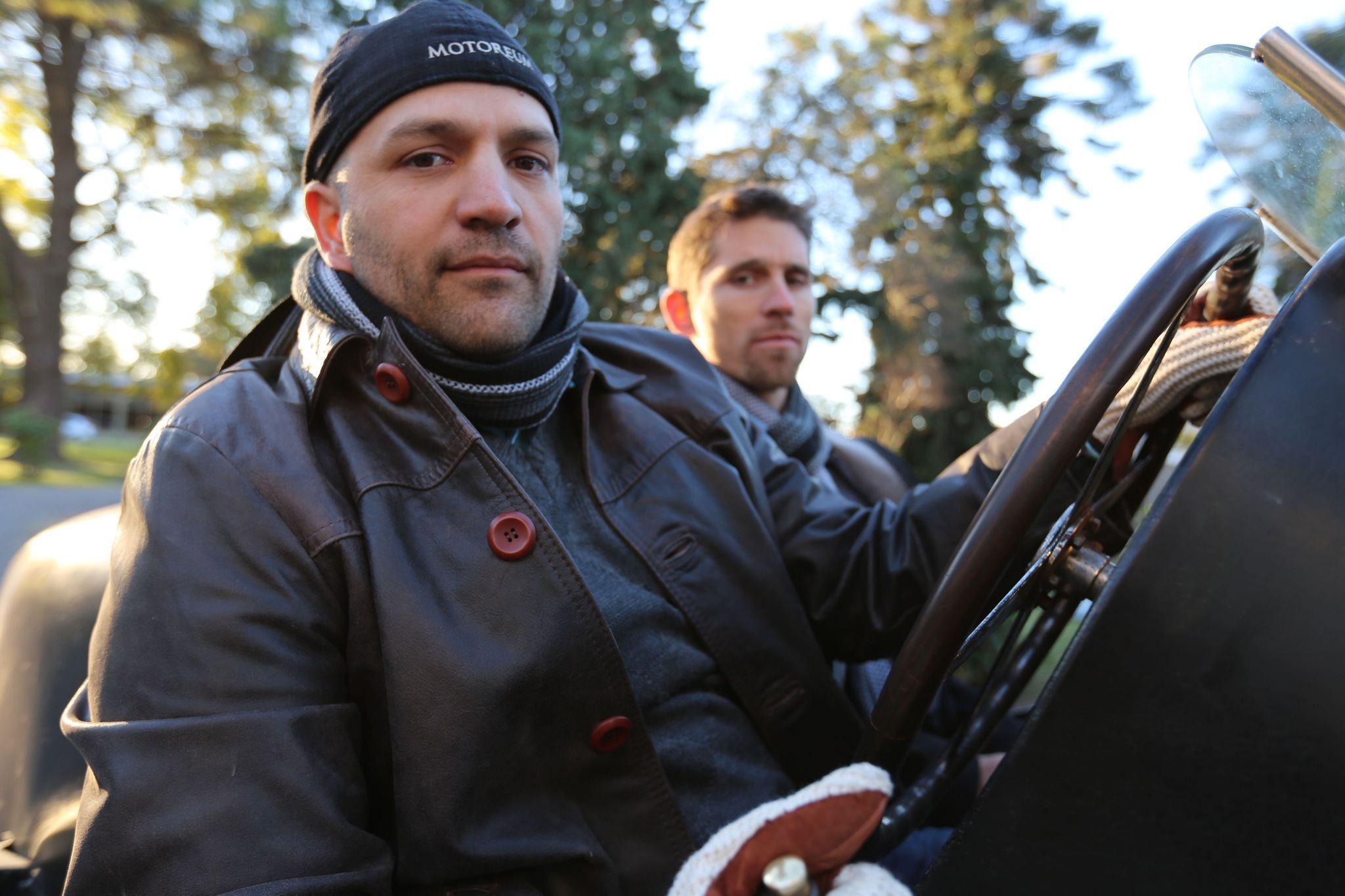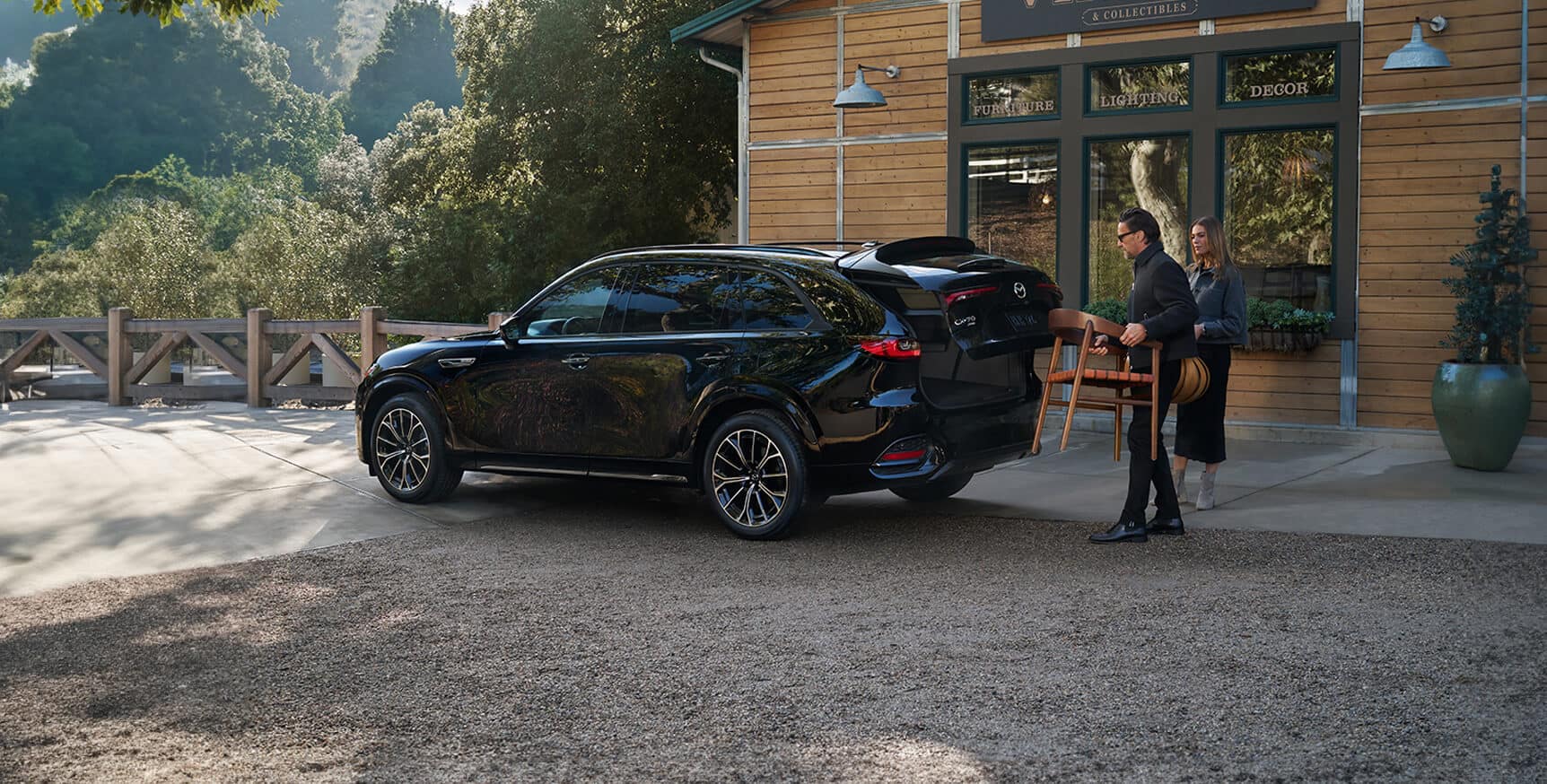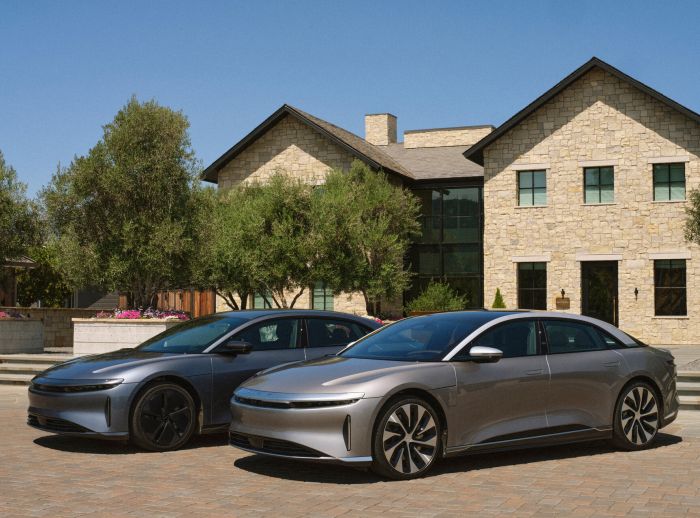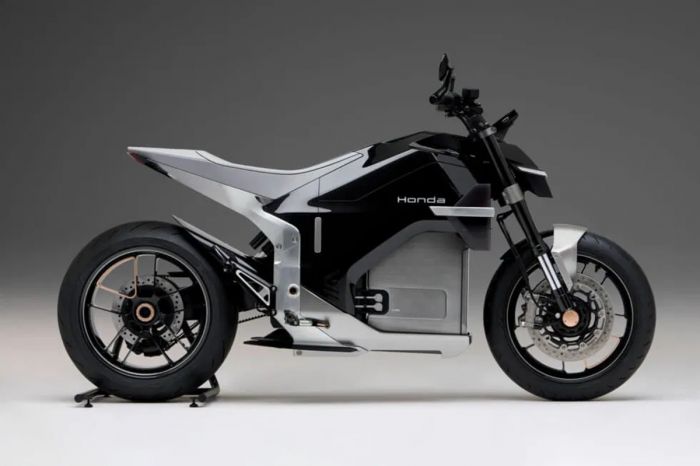
There’s nothing like the discovery of a valuable vintage automobile to rev the engine of a serious luxury car collector, but in today’s competitive market that’s become an unusual opportunity. Enter Yusuf Johnson and Antonio Brunet, rare car dealers from Texas who travel the globe to discover automotive treasures hidden deep inside dangerous, off-the-map places. The payoff can be enormous, but so are the risks, as seen in their Discovery Channel series Chrome Underground, which follows the action as the business partners gamble — with their money and lives — in international auto archeology adventures that would make Indiana Jones proud.
On behalf of their Austin-based company Motoreum, Antonio and Yusuf throw the dice by heading abroad to unusual places that other car dealers and collectors are too afraid to visit. Each week, Chrome Underground viewers can follow the car hunters as they search for vehicles and find ways to protect their cash and valuable investments from the gangs and cartels of Argentina, Brazil, Columbia, Mexico and Venezuela. How far will they go to avoid carjackings, thefts, and roadside breakdowns? For a start, they hired a bodyguard trained by the Israeli secret service, and have already made getaways by camouflaging a 1957 Porsche Speedster in a horse trailer and by smuggling a 1963 VW Kombi in a shipping crate.
They could write a book on what they’ve learned about high-value “diamond in the rough” autos — earning five or six figure profits every sale — but instead they spoke to JustLuxe to share their insider info about collecting the best of the best.

JustLuxe: Besides risking your lives to hunt for rare cars around the world, what services do you provide to customers and who are they?
Antonio Brunet: Motoreum is more like a dynamic motor museum than a traditional showroom. We buy, sell, broker and offer consultation services to investors and enthusiasts. In our Austin, Texas location we offer mechanical and restoration services. Our business is about offering the rarest and finest collector cars. We have a diverse range of clients from the avid enthusiast to the first time collector, along with investors of all types. Most recently, we expanded our services to include a collector car auction company called Motostalgia.
JL: What's your best advice for car collectors regarding how and where to buy?
Yusuf Johnson: First and foremost any collector must answer an important question before buying a classic car: Why do you want to buy a classic car? Is it to drive it regularly? To show at events? To restore, either personally or by a professional? Or solely for investment purposes?
Often the answers may overlap, but they will help determine how and where to find the right classic car, whether via auction, a broker, dealer or through an independent search. The one thing we definitely recommend is to invest upfront in professional advice which can save you a lot of money and hassle down the road. The biggest mistake is to purchase a classic car without proper guidance, which often times leads to frustration and potentially a monetary loss.

JL: What are the rarest and most valuable autos that you've been able to find and purchase in your searches?
YJ: Without a doubt one of the finest and rarest cars we have ever located is the 1950 Cisitalia-Abarth 204A chassis #04 worth over $4.5 million. We discovered the lead during a car hunting trip in Argentina, which ultimately took us from Buenos Aires to Turin, Italy. This is a one-of-a-kind historic competition vehicle with incredible provenance that is well documented. This particular car represents an incredible spectrum of post-World War II automotive history involving some of the eras biggest legends such as Porsche founder Ferdinand Porsche; Cisitalia founder Piero Dusio; Carlo Abarth; and Tazio "The Flyihng Mantuan" Nuvolari — who is arguably one of the greatest competition drivers of all time. He achieved over 90 Grand Prix victories during his career and is recognized as the innovator of the racing technique called "drifting."
JL: What are some of the most unusual places you've found automotive treasures?
YJ: As you'll see in "Chrome Underground," Latin America has truly surprised us with some most unusual and incredible adventures in our search for automotive treasure. We really enjoy immersing ourselves in the culture and history surrounding the cars we hunt, while traveling around the world searching for the rarest and finest.

JL: What models are on your collectible auto wish list, either for yourselves or for clients?
AB: An automotive wish list is difficult to develop since beauty indeed is in the eye of the beholder, and taste in cars is as diverse as our clientele. With that being said, on the top of our wish list are rare and historic competition vehicles which are highly sought after by investors. Today's market defines many wish lists — vintage sport cars are very popular right now. European sports cars have also gone through the roof in value with continuous six- and seven-figure sales of Ferraris, Mercedes and Porsches. For us personally, in regards to longer term investments, we look for early 1930s American vintage cars. We feel they are currently on the lower end of their market trend and represent a great value for the investment at today's prices.
JL: Which cars in your personal collection are you most proud of? Which are the most valuable — either fiscally or sentimentally?
YJ: The difficult part as avid enthusiasts and collectors is that we are a business and most everything is available for our clients to purchase, which means we constantly have to let go of our favorites. One example is a 1963 Corvette Split Window coupe that is believed to be one of only three ever built with prototype rear air-conditioning. We also have a 1969 Beetle which is one of only 15 built by the last VW Beetle factory in the world. And our 1931 Pur Sang-Bugatti Type 51 delivers an unparalleled open cockpit. Last, but not least, is a 1972 Opel GT — while it's not very expensive, it is an exact clone of Antonio's first classic car he purchased in high school.

JL: Who are some of the greatest auto collectors in the world, and in your opinion, what are their greatest treasures?
AB: Without a doubt one of the best known public collectors is Jay Leno. He has an incredible collection of Bugattis and has a very diverse taste in classic cars from different eras, which we relate to since we also appreciate most eras and designs of collector cars. Ralph Lauren has an incredible collection and owns probably one of our personal favorite cars ever produced: the Bugatti Atlantic. But the truth is that some of the most impressive cars and collections are owned by individuals around the world that choose to remain anonymous and keep their valuable assets behind closed doors.
JL: What are the best auto collections in the world that are available for public viewing?
YJ: We personally like the Museum dell Automobile di Torino in Italy, the Mullin Automotive Museum in Oxnard, CA, and the Petersen Automotive Museum in Los Angeles, California. But without a doubt Scottsdale, Arizona and Monterey, California both have an annual automotive extravaganza featuring several premier collector car auctions that display and then sell some of the most magnificent collections of cars assembled anywhere in the world.

JL: Which other auto auctions do you recommend for the serious collector?
AB: Well, Motostalgia, of course, which is our own collector car auction. But the truth is that it also depends on the genre of collector cars that you are searching for. Currently, Mecum is probably leading the industry selling muscle cars and American classics. RM Auctions and Gooding & Company battle it out for dominance in the fine European sports car and antique vehicle market. Bonhams maintains a strong market for historic competition cars. And in Scottsdale the world-recognized Barrett-Jackson has great cars and offers an impressive experience not to be missed.
JL: What are the "holy grails" for car collectors such as yourself and your clients? Cars that may or may not even exist to be found?
AB: The biggest "holy grails" are the ones that have not yet been found. Many times they're the first and the last of a kind, or cars that are entwined with our history. These can be so valuable monetarily simply because they are time machines that take us back in time to a past that cannot be recreated. Some cars that can be called holy grails are cars have had a significant impact on our culture, such as the 1934 Ford in which Bonnie and Clyde were killed. Some have been part of the changing course of history, like the Lincoln limousine in which JFK was shot or the Mercedes Benz horseless carriage which was the first personal transportation without the use of animals. Cars have changed empires, as did the first Beetle designed by Ferdinand Porsche and used by the Germans. The first factory-produced Ford Model T revolutionized industrial production and altered the course of US history. And the cars created by the short-lived legend Jean Bugatti are artistic masterpieces that will forever impact the concept of design.

JL: What do you recommend collectors invest in now for best return in the future?
AB: Vintage European sport cars represent a very strong short-term market. For longer term investments, pre-war American classics are a great value at today's pricing. For higher dollar investments, vintage competition cars are very secure. For investments to simply drive and enjoy it's hard to beat the value of muscle cars. For a safe investment designed to mitigate financial risk, we like classic American cruisers. Vintage trucks are slowly increasing in value as they grow in popularity.
Be careful with customs, street rods and hot rods, as some of them are worth a small fortune, but personal taste plays a large role in determining pricing in this market. Again, we highly recommend that all buyers consult with a professional.














